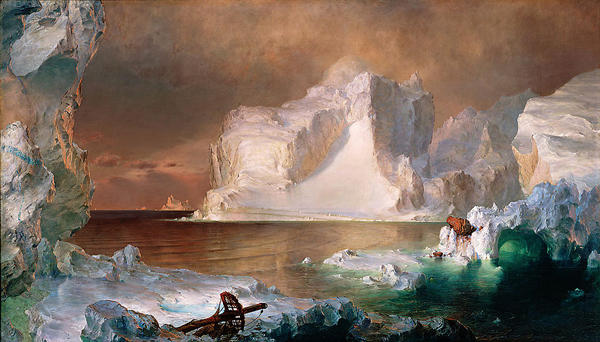Northern Seas
This project, Northern Seas: An Interdisciplinary Study of Human/Marine and Climate System Interactions in Arctic North America over the Last Millennium, assembles past climatic and ecological information from historic documents to produce a high resolution understanding of the Arctic System over time. Documents including the journals of coastal arctic traders, exploratory expedition members, ship’s logs and commercial whaling and sealing records that span the past 400 years provide daily weather and marine ecosystem conditions at the local scale. Historical records offer rich data sets on, for example, air temperature, sea surface temperature, wind velocity, sea ice conditions, and species biogeography. This data can be placed into the context of global-scale climate events such as the Little Ice Age (~1300 to 1850) and local and regional-scale human activities, thus providing a more finely nuanced portrait of the Arctic System over time. In combination with existing paleo-environmental, climatic and sea ice information, evidence from historic records advances developing frameworks for understanding system response to changing conditions in the future.

'Aurora Borealis', by Frederic Edwin Church (1865).

'The Icebergs', by Frederic Edwin Church (1861).
Project Team
Principal Investigator
Maribeth Murray, AINA, University of Calgary
Researchers
- Patricia Wells, Postdoctoral Fellow, AINA, University of Calgary
- Matthew Ayre, Postdoctoral Fellow, AINA, University of Calgary
Collaborators and Partners
- Peter Schledermann, AINA, University of Calgary
- Shannon Vossepoel, AINA, University of Calgary
- David Barber, Department of Environment and Geography, University of Manitoba
- David Atkinson, Department of Geography, University of Victoria
- Kevin Wood, National Oceanic and Atmospheric Administration, US Government
- Clive Wilkinson, Climatic Research Unit, University of East Anglia
- Philip Brohan, Met Office, Hadley Center, UK
Funding
Funding for this project is provided by an Insight Grant (781285) from the Social Sciences and Humanities Research Council (SSHRC) = Le Conseil de recherches en sciences humaines (CRSH).
Awards
An outreach initiative from the Northern Seas project, featuring a collaboration between Dr Matthew Ayre (AINA) and Mr Warren Lake (Robert Thirsk High School, Calgary), was shortlisted for the 2018 Governor General's History Award for Excellence in Teaching.
Update: The Peary Expedition to Reach the North Pole 1905–1906
Records of weather in the High Arctic are almost nonexistent before the Second World War. However, during Robert Peary’s second attempt to reach the North Pole (1905-06), engineer Ross Marvin and others kept a detailed log of climate conditions during the long winter on board their ice-bound ship, the SS Roosevelt. The Roosevelt and its crew spent from September 1905 to July 1906 off Cape Sheridan, northeastern Ellesmere Island (Nunavut). The ship had been specially outfitted to withstand the hardships of Arctic waters and the pressure of being encased in ice while the expedition members prepared for Peary’s attempt to reach the Pole.
Each day Marvin recorded temperature and barometric pressure and made observations on wind direction and velocity as well as descriptions of ice conditions. In addition, the log provides snapshots of work and other activities around and onboard the ship during the winter.
Inuit in the region provided knowledge, dogs, technology and their hunting and sewing skills were essential to the expedition. Marvin recorded some of the extraordinary hunting successes of the Inuit who were almost solely responsible for providing meat to the explorers
The Northern Seas Project has transcribed these entries, and in combination with other records will help to build a detailed picture of High Arctic climate in recent centuries.

Ross Marvin Roosevelt 1905-06 log. Reproduced with permission from the Chemung Historical Society (https://www.chemungvalleymuseum.org/).
